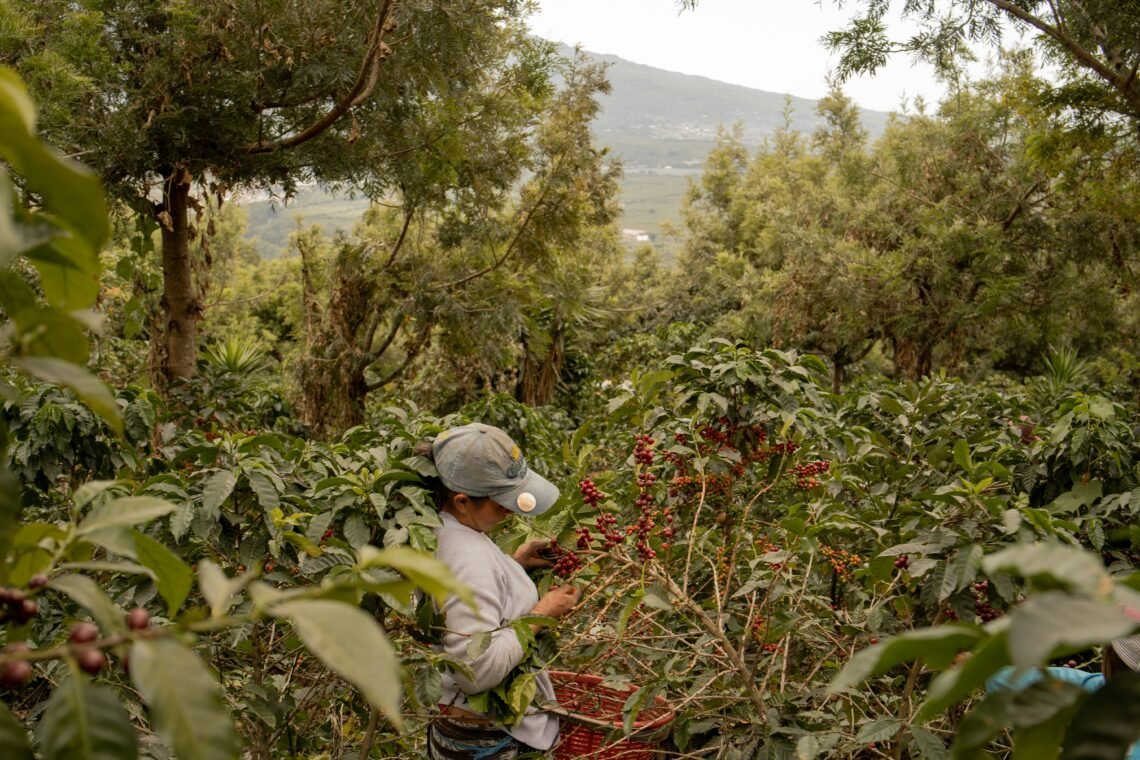
Coffee farming and more
The aroma of a freshly opened packet of coffee beans fills the room. It unleashes a rich aromatic rush. The mix of roasted nuts, dark chocolate, and a hint of smokiness. Promise of a good cup. This cold morning calls for a hot cup of americano. First sip is pure bliss. As the steam rises, the cup warms your hands as you enjoy its deep earthy flavor and gradual flow of adrenaline unlocked by caffein. For a moment, that cup of coffee makes everything feel perfectly still.
Whatever the reason for your indulgence,every other day, the cup gets you what you need from it. So why care to understand the process of how got it there. Why be concerned about the country of origing, farm, processing method, or even the type of roast? Does any of that play a role in the quality of your preffered daily brew? Besides, coffee is coffee right? Not really. There’s so much behind a perfectly brewed cup. All of those factors ( and more ) contribute to it. But Like any other story, the beggining is just as important. For this case, it starts with the coffee farm.
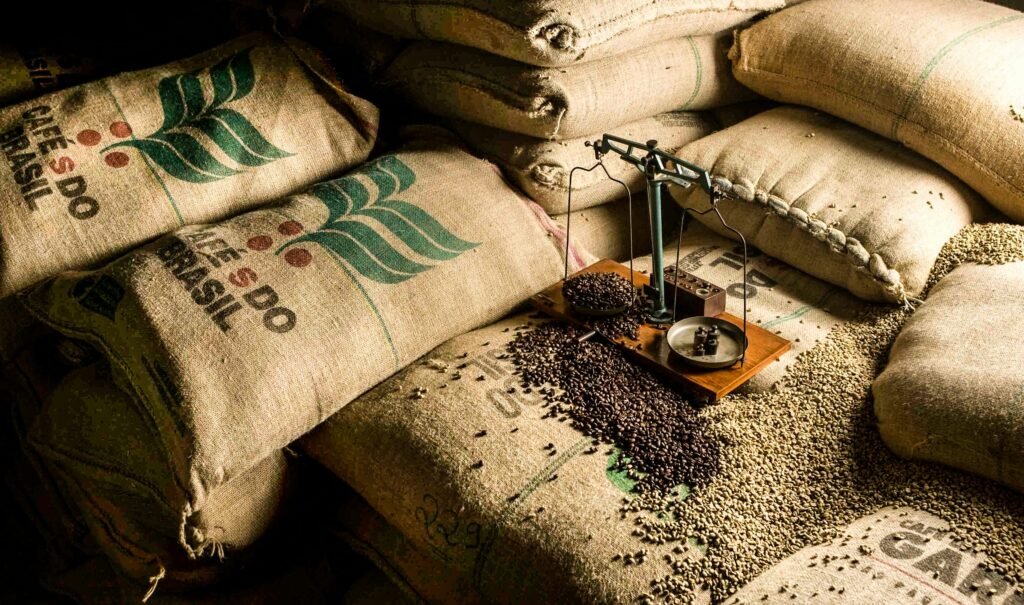
coffee, like all other trees, begins as a fruit. and like all fruits that exists, it is shaped by where it is grown, the soil it roots in and even the hands that harvests it. Every step as crucial as the next. The coffee cherry, starts as green berries and as they ripen, develep to a brighter shade of red, yellow or pink depending on the coffee species and variety.
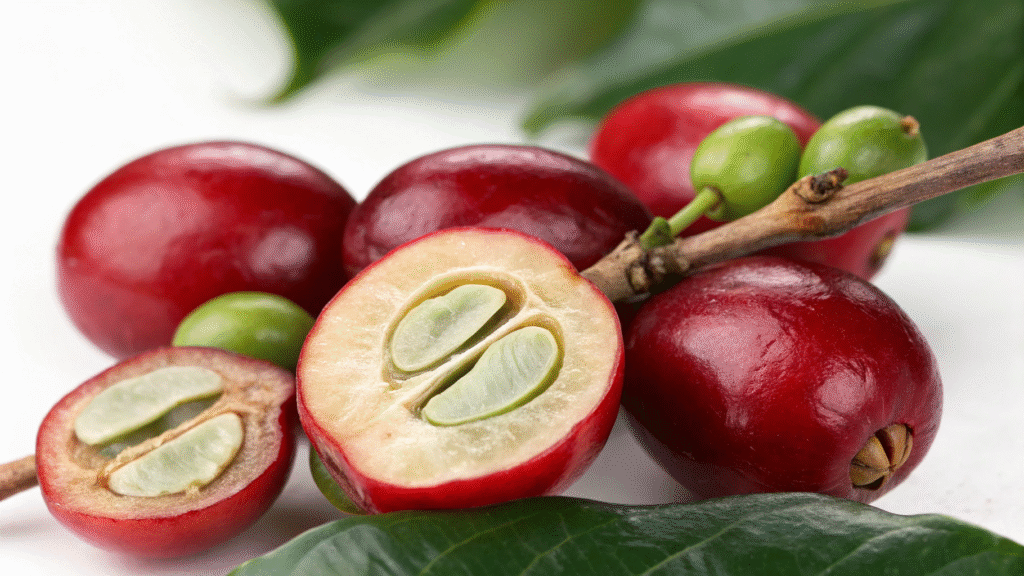
There are generally more than 100 species of coffee. Two out of those being the ones that are mainly cultivated for coffee production and consumption. coffee arabica ( Arabica ) and coffea canephora ( robusta ) Arabica, sweet, fruity, and vibrant is a little more high mantainance. Robusta, strong, earthy and sometimes bitter in flavor has caffeine like it is trying to prove a point. You will find arabica mostly in your favorite pour overs while Robusta in espresso blends and and famous instant coffees.
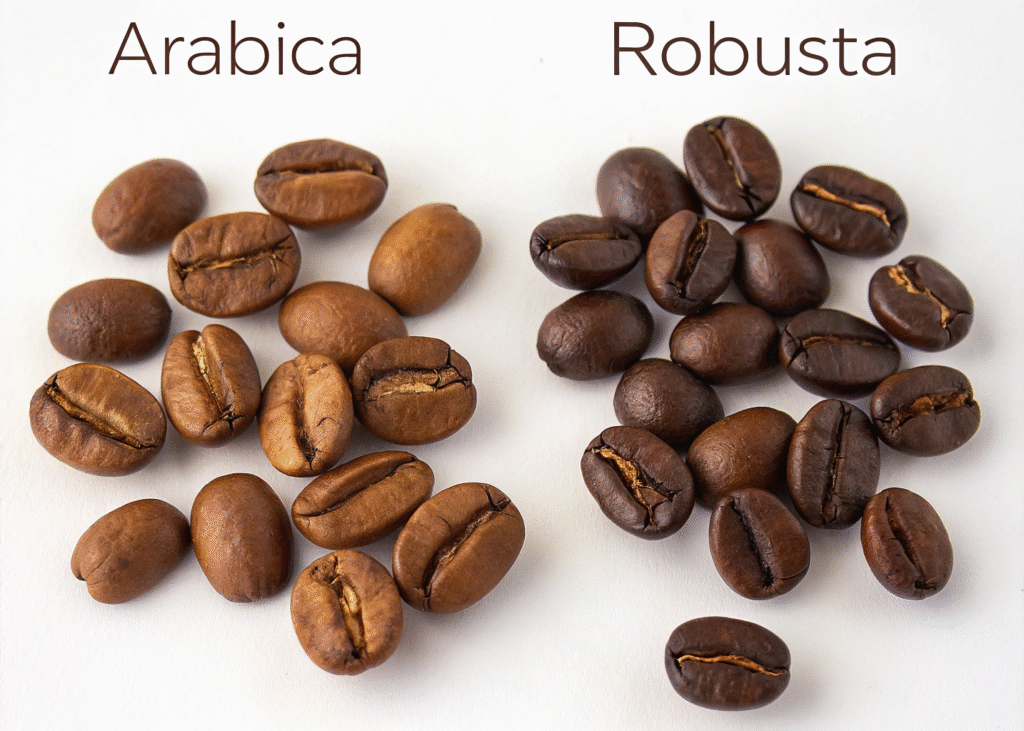
Coffee thrives on a region know as the coffee belt. A massive area of land that lies between the tropics of cancer and capricon. The region ideally holds the perfect condition for coffee growing. Trpical climate, good soil, sufficient rainfall and higher altitude. stretching across five continents, from vietnam, to kenya all the way to Brazil.
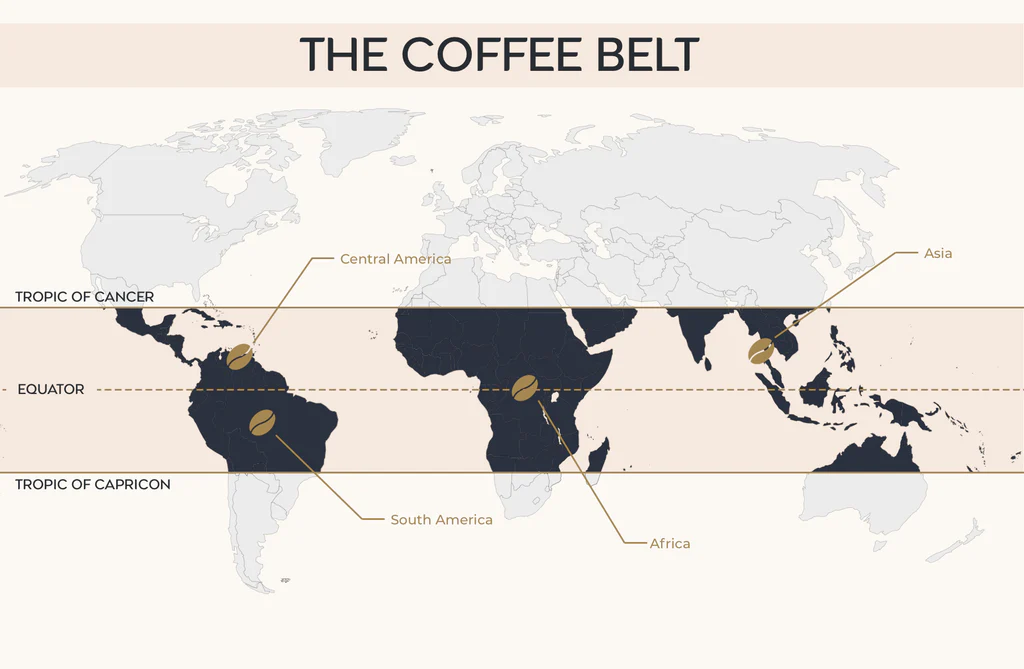
Brazil. Located in South America, it is regarded as the titan of coffee production. Being the largest producer of coffee, it single handedly supplies almost a third of the world’s coffee.
Brazil grows mostly Arabica, particularly varieties like Bourbon, Mundo Novo, and Catuai. These beans are shaped by altitudes between 800 to 1,200 meters. Lower than many East African coffees, but still high enough to coax out balanced acidity, nutty sweetness, and that classic chocolatey body Brazilian coffees are known for. Sun is abundant. Rain knows its rhythm. Machines hum where hands once did all the work. It’s a different kind of poetry.
Farming here is both science and sweat. Trees are pruned, soil is tested, pests are monitored. Harvest season, from May to September, brings long days and heavy loads. The cherries are picked by hand, some by machine and the clock starts ticking. Because the moment a cherry is plucked, it begins to degrade. How it’s handled next determines everything.
This is where processing comes in.
processing : the bean beneath the cherry
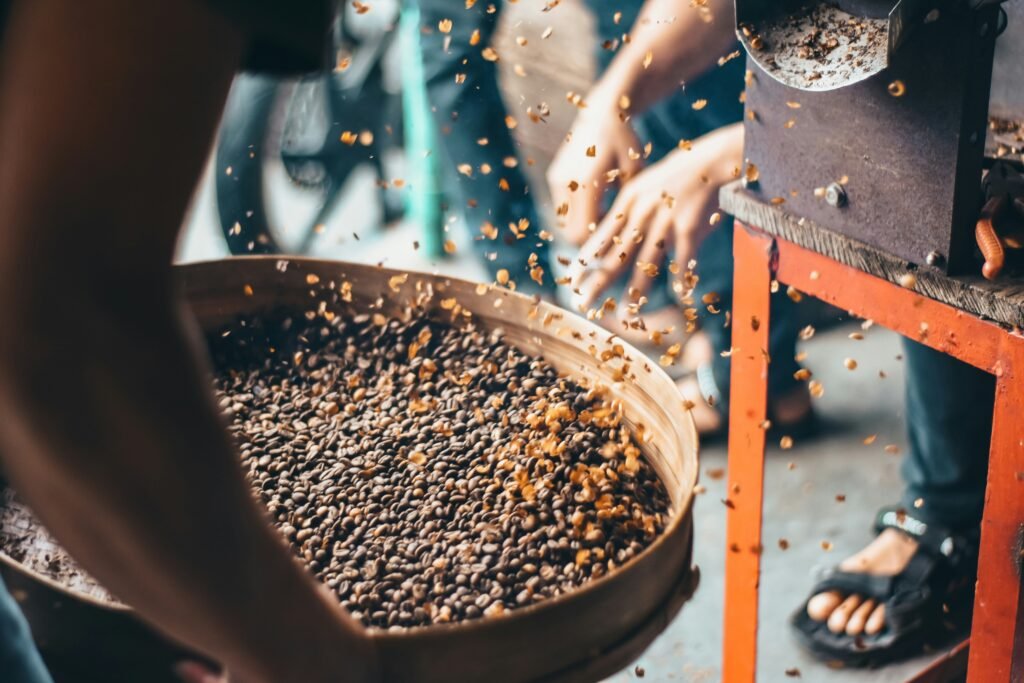
Processing is the bridge that links the farm to the roaster. It not talked about as much. Rarely paid that much attention to by those do not participate in these early, but very crucial stages. But it is where the bean becomes itself. From a cherry fruit to a coffee bean.
There are three main methods of processing : washed, natural and honey.In the washed process, beans are pulped, fermented in water to strip off the mucilage, then dried. It’s clean, bright, refined. like a white shirt pressed and folded.
Natural processing is most common. Cherries are laid out whole to dry in the sun, fruit and all. It’s unpredictable, wild, often fruity or boozy in flavor. Risky, but magic when done right.
Honey processing splits the difference. skin off, fruit left on, dried slowly. It’s sticky, sweet, nuanced. A little of both worlds.
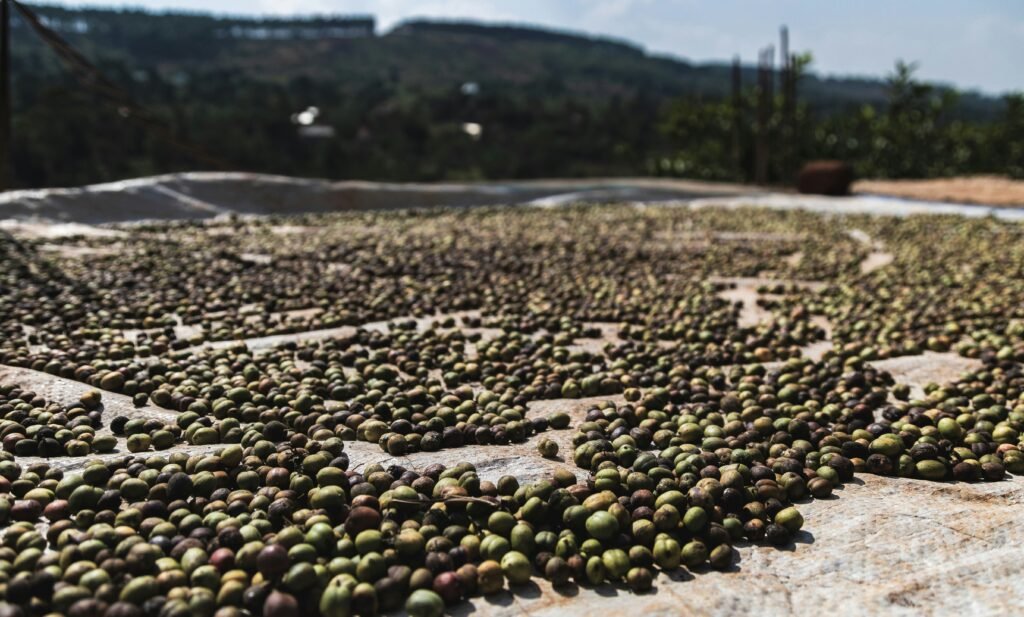
In Brazil, because of the consistent climate, natural and pulped natural (a variant of honey) are common. Sun-drying is easier here. But don’t mistake that for lack of care. Every drying bed, every rotation of the beans under the sun, matters. Once the coffee beans have been harvested, processed, and sorted, they are ready to be roasted and brewed.
From the lush green farms, carefully harvested by dedicated hands it began a journey. One of transformation and craft. Next time you take that sip, before the flavors bloom, before the caffeine kicks in, pause. Somewhere, far from your kitchen counter or café table, a ripe cherry once clung to a branch on the open fields of coffee coffee trees.
That journey continues. From the hands of the farmer to the heat of the roaster. The next chapter unfolds in fire and precision. In the next blog, we explore how raw green beans is transformed into the complex, aromatic experience we call coffee…

Bean to Mug : The origin story

Roast to reveal
You May Also Like
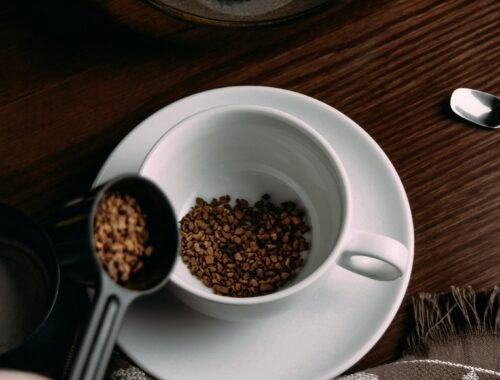
The Coffee We Don’t Talk About
May 18, 2025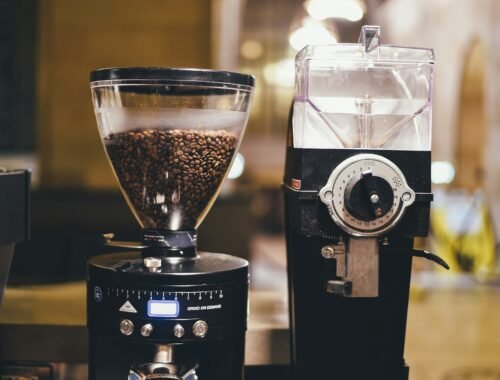
Grinders
July 7, 2025
